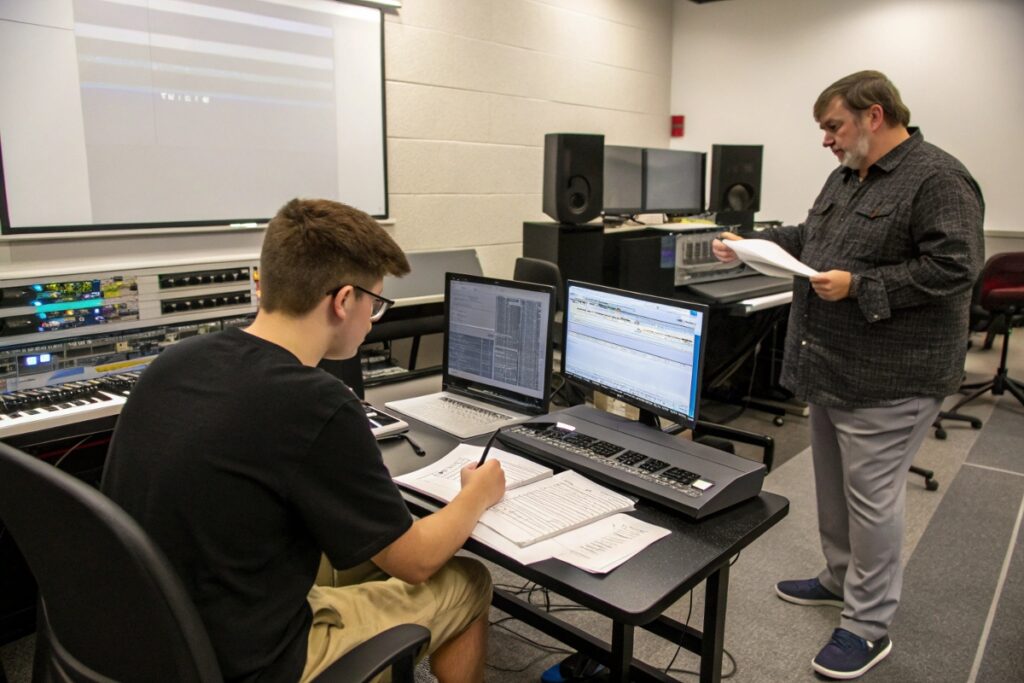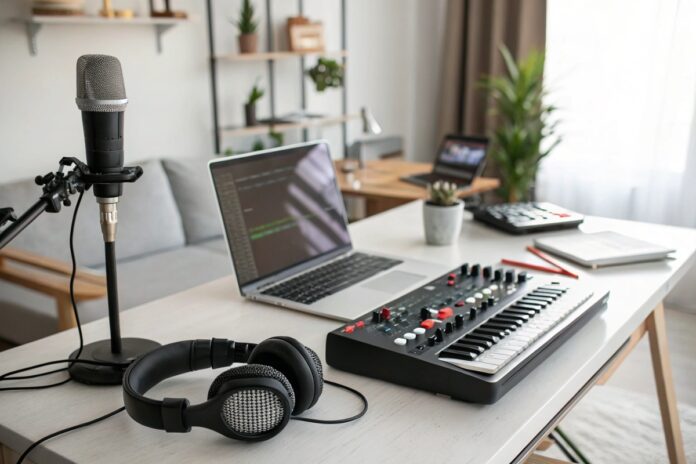Getting started in the music industry is frequently seen as a challenging and daunting enterprise with many individuals questioning where to begin. Researching new methods and exercises, networking with industry professionals, and maintaining an engaging online presence are all of great importance. However, there are two fundamentals that should take pride of place amongst your personal voice and sound arsenal; developing technique and composing a demo reel. Both of these practices are key to establishing yourself as an experienced and qualified voice actor. Fortunately, both can work hand-in-hand through building your own recording studio. Whilst this may sound advanced and beyond your financial and technological limits, a professional setup is easily attainable to even beginners for a relatively short sum of money.
Importance of Listening and Self-Assessment
Listening back to your audio work is pivotal in your development as a key actor of this industry. It can help you hone in on issues you are having as well as allow you to recognize your key strengths. Owning studio equipment allows for such actions, additionally negating any potential negative surprises one might incur through premiering their skills at a voice-over recording studio. As well as these obvious benefits, owning studio equipment grants you readily available, industry-standard recordings for a demo reel. More so, you are able to add to your portfolio as and when your skill set increases and work to your own schedule.
Essential Equipment for a Home Studio

Choosing the Right Computer
Firstly, it is preferred that one owns a desktop or laptop computer. Tablets such as iPad will work but difficulties may occur when accounting for connectivity to other technology and software, same goes for mobile phones. It doesn’t have to be a supercomputer by any means, it is more than likely that your regular computer will be more than capable.
Basic Equipment for Recording
Aside from hardware, you will need software in order to save and manipulate recordings. Beginners might find using a DAW (Digital Audio Workstation) such as Logic, Cubase, or Ableton too advanced and out of their price range. Fortunately, professionals can utilize a range of readily available software and still produce highly professional voice-over recordings. Audacity is a free audio editor and recorder frequently used within the media industry, with journalists and radio stations often incorporating it amongst their workflow. Audacity has the benefits of a simple interface and easy-to-grasp usability, with advanced extensions and tools built-in should you wish to refine your recordings.
The Role of an Audio Interface
In order to record your voice at an industry-standard quality, an audio interface is a wise investment. Essentially, an audio interface is a high-grade soundcard with ports and dials tailored to recording audio from a microphone or instrument. Extremely professional interfaces have dropped in price considerably over the past 10 years, whilst their quality has increased. A great example is the Scarlett 2i2 USB interface by Focusrite. Consumers can now pick up this hardware for $150. However, there are even cheaper options out there. For the price though, you really cannot go wrong with this piece of kit.
Selecting the Right Microphone
When choosing a microphone for your home studio there are many options. There are those who argue that condenser microphones are better for voice-over due to their sensitivity levels and ability to pick up high frequencies. The latter is important as particular nuances and expressions in voice are primarily issued within the high-frequency levels. However, there are those who prefer to use dynamic broadcast microphones, as these lower the reception of ambient noise and are generally more rugged. Ultimately your choice of microphone will depend upon your price range, vocal type, and location of the studio. It is worthwhile spending some time researching on forums and voice-over websites as there are plenty of other people in your shoes! More often than not you will see recommendations of fairly expensive microphones, but rest assured, there are a wealth of extremely professional microphones for under $200 that will produce astounding recordings.
Additional Studio Accessories
In addition to these basics, it is recommended that you purchase a stand and pop shield. These will help with unwanted vibrations and plosives. Furthermore, you will likely find it helpful to own a decent pair of overhead headphones in order to monitor your voice-over takes.
Space and Acoustics for a Home Studio
Location Matters
Producing a high-quality voice-over is dependent on many factors, one such being the location that you produce them in. Despite the need to analyze the acoustics post-setup, it is recommended that you take such elements into consideration before beginning construction. Do not rush to assemble your studio simply due to receiving the equipment. Take your time and evaluate the surroundings, undertaking such assessments will help your voice-over recordings tenfold. Here are a few tips to regard when selecting and constructing your voice-over area. Speaking about location, also demands that we speak about virtual locations, as the online universe is nowadays as important as the physical, so having an online presence is essential. For this purpose, you need to use a web development agency to help you master a quality presence in the sphere too.
Room Size Considerations
Your room doesn’t need to be large by any stretch, however, deliberate the area your hardware will amount to. A small to medium-sized room will work well, as this will provide a comfortable space for the equipment as well as reduce the likelihood of echo. Refrain from including any non-essential items amongst the room, as clutter can manipulate sound waves and thus trick your ears.
Sound Proofing Techniques
Whilst you will not be generating the loud sounds of an electric guitar or drum kit, it is important to keep noise from entering your studio as well as leave it. This is particularly why your chosen location is highly relevant to the overall outcome of your recordings. There are many homemade ways to go about soundproofing with little cost involved. For example, placing thermal insulation foam and blankets over doors, wall space, and windows can drastically increase your soundproofing. However, take note that too much will completely deaden the acoustics of your room.
Acoustic Treatment for Professional Sound
The acoustic treatment of your studio is key to creating professional-sounding recordings. There are many retailers online who specialize in acoustic foam panels developed primarily for voice-over artists. Usually positioned around your microphone, these panels will help reduce unwanted reflections and reverberations, letting your microphone capture the true essence of your voice. There is no need to go all out and purchase an all-singing, all-dancing full-size vocal booth. In fact, sometimes the smaller the better. Look for wedge-shaped foam panels that can fit solely around your microphone. This will acoustically treat the air directly adjacent to the microphone, much like you’d find in an established voice-over recording studio.
The Value of a Masters in Music Industry

For those looking to advance further, obtaining a masters in music industry can provide extensive knowledge and industry connections. Many successful professionals credit their growth to higher education and structured learning. A masters in music industry can equip you with advanced skills in music production, business management, and networking within the field. If you aspire to make a significant impact, considering a masters in music industry may be a wise investment.


